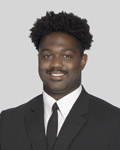About Us
Welcome to the Cleveland Clinic Akron General's EMT Education Program, a longstanding commitment to providing exceptional pre-hospital care to Summit County and its surrounding areas since 1976. Our program, housed within Cleveland Clinic Akron General's Department of Medical Education, has proudly produced over 1,400 skilled paramedics.
We offer three EMT courses annually at our Cleveland Clinic Akron General Campus.
Accredited by the Ohio Department of Public Safety, the Commission on Accreditation of Allied Health Education Programs (CAAHEP), and the Committee on Accreditation of Education Programs for the Emergency Medical Services Professions (CoAEMSP), our program stands as a pioneer in Ohio, being the first hospital-based program in the state and the 72nd nationwide to achieve CAAHEP National Certification in 1991.
We are delighted to announce that an Articulation Agreement has been established between Cleveland Clinic Akron General and The University of Akron's College of Health and Human Sciences. This agreement allows eligible paramedic graduates to transfer thirty academic credit hours towards an Associate of Applied Science in Emergency Medical Services Technology Degree. This opportunity is open to all program graduates from 1985 onwards. Our EMT courses are featured within the University of Akron's course offerings.
For more information, please contact the EMS Education Office at EMSPrograms@ccf.org or call us at 330.344.6655. We are here to assist you.
EMT Course Information
Traditional EMT course overview
Our traditional EMT course is offered twice a year, with classes starting in January for the spring course and late August for the fall course. Spanning four months, classes are held on Monday, Wednesday, and Thursday evenings from 6 p.m. to 10 p.m. You'll gain approximately 200 hours of comprehensive didactic, clinical, and field internship experience.
The current EMT course tuition is $1,200. Students may be responsible for purchasing a textbook and/or clinical and testing software. The National Registry Examination fee of $104 is paid by the student directly to the National Registry upon examination registration at the end of the course. Prior to acceptance, a pre-entrance exam is required, and additional documents including but limited to high school transcripts, Ohio Driver's License, and CPR certification must be submitted.
As an EMT student, you'll acquire essential skills such as airway management, bleeding control, cardiac arrest management, and more. We prioritize your health and safety, ensuring compliance with immunizations and screenings for a safe learning environment.
To apply, complete the application and submit supporting documents to the EMT Education Program. Incomplete applications will not be accepted. We appreciate your interest in our program and look forward to supporting you on your journey to becoming a skilled EMT. Call us at 330.344.6655 for more information.
Requirements
The applicant must meet the following requirements and submit copies of the documents listed below to the EMS education office no later than two days prior to the pre-entrance exam.
- Completed application.
- Copy of Ohio Driver’s License.
Additional requirements
- Pass the pre-entrance exam.
- Pay a $20 testing fee.
- Due the night of the pretest.
- Personal Health History and Physician Physical Exam.
- Forms will be provided upon acceptance into the course.
- Documentation of Immunization History.
- Hepatitis titer or waiver.
- 10 panel Urine Toxicology screen results.
- Seasonal flu shots are required from October - April every year.
Applications that are incomplete will not be accepted. Please send all documents to EMSPrograms@ccf.org or to the address below:
Cleveland Clinic Akron General
Attn: Paramedic Education Program
1 Akron General Ave
Akron, OH 44307
Pre-entrance exam
The pre-entrance exam consists of the Wonderlic Scholastic Learning Exam. This is a widely recognized assessment tool designed to evaluate an individual's cognitive abilities and academic potential. It consists of multiple-choice questions that assess various areas, including verbal reasoning, math skills, and logical thinking. You must have your driver’s license or state-issued ID with you on the day of the exam. There is a $20 testing fee that is due the night of the pre-test payable by cash, money order, or certified check only. Pre-entrance exam scores will determine student selection.
EMT skillset
EMTs (Emergency Medical Technicians) possess a broad range of skills that enable them to provide vital pre-hospital medical care. Here is a list of skills commonly performed by EMTs:
- Patient Assessment: EMTs assess the condition and vital signs of patients to determine the appropriate course of treatment.
- Airway Management: EMTs establish and maintain open airways using techniques like manual maneuvers and airway adjuncts.
- Cardiopulmonary Resuscitation (CPR): EMTs perform CPR, including chest compressions and rescue breathing, to revive patients experiencing cardiac arrest.
- Bleeding Control: EMTs apply direct pressure, dressings, and tourniquets to control bleeding and prevent further blood loss.
- Splinting and Immobilization: EMTs stabilize and immobilize fractures, dislocations, and spinal injuries using splints, boards, and other immobilization techniques.
- Medication Administration: EMTs may administer certain medications, such as epinephrine for severe allergic reactions or naloxone for opioid overdoses, based on established protocols.
- Oxygen Administration: EMTs deliver supplemental oxygen to patients experiencing respiratory distress or low oxygen levels.
- Automated External Defibrillation (AED): EMTs use AEDs to analyze heart rhythms and deliver electrical shocks when necessary to restore normal cardiac function.
- Patient Transfer and Lifting Techniques: EMTs safely move and transfer patients using proper lifting and transfer techniques to prevent further injury.
- Documentation and Communication: EMTs maintain accurate patient records, complete incident reports, and effectively communicate patient information to healthcare professionals.
- Assisting in Childbirth: EMTs provide assistance and support during childbirth emergencies, ensuring the safety and well-being of both the mother and baby.
- Mental Health Crisis Intervention: EMTs assess and manage individuals experiencing mental health crises, providing emotional support and facilitating appropriate care.
These skills, among others, equip EMTs to deliver critical emergency care in a wide range of situations, making them an integral part of the healthcare system.
Thank you for your interest in our program. If you have further questions, please contact the EMS Education office at 330.344.6655.
Accelerated EMT Course Information
Accelerated EMT course overview
The Accelerated EMT course is once a year, with classes starting in June. Spanning only five weeks, classes are held Monday thru Friday. Class meets from 8:30 a.m. to 4:30 p.m. Monday thru Thursday, and on Friday from 9 a.m. to 11 a.m. Clinical and field internship will occur in the evenings and on weekends. You'll gain approximately 200 hours of comprehensive didactic, clinical, and field internship experience.
The current EMT course tuition is $1,200. Students may be responsible for purchasing a textbook and/or clinical and testing software. The National Registry Examination fee of $104 is paid by the student directly to the National Registry upon examination registration at the end of the course. Prior to acceptance, a pre-entrance exam is required, and additional documents including but limited to high school transcripts, Ohio Driver's License, and CPR certification must be submitted.
As an EMT student, you'll acquire essential skills such as airway management, bleeding control, cardiac arrest management, and more. We prioritize your health and safety, ensuring compliance with immunizations and screenings for a safe learning environment.
To apply, complete the application and submit supporting documents to the EMT Education Program. Incomplete applications will not be accepted. We appreciate your interest in our program and look forward to supporting you on your journey to becoming a skilled EMT. Call us at 330.344.6655 for more information.
2025 Applications Closed.
Summer 2026 Applications to open December 31st, 2025.
Requirements
The applicant must meet the following requirements and submit copies of the documents listed below to the EMS education office no later than two days prior to the pre-entrance exam.
- Completed application.
- Official high school and college transcripts (emailed to EMSPrograms@ccf.org).
- Copy of Ohio Driver’s License.
Additional Requirements
- Pass the pre-entrance exam.
- Pay a $20 testing fee.
- Due the night of the pretest.
- Personal Health History and Physician Physical Exam.
- Forms will be provided upon acceptance into the course.
- Documentation of Immunization History.
- Hepatitis titer or waiver.
- 10 panel Urine Toxicology screen results.
- Seasonal flu.
Applications that are incomplete will not be accepted. Please send all documents to EMSPrograms@ccf.org or to the address below:
Cleveland Clinic Akron General
Attn: Paramedic Education Program
1 Akron General Ave
Akron, OH 44307
Pre-entrance exam
The pre-entrance exam consists of the Wonderlic Scholastic Learning Exam. This is a widely recognized assessment tool designed to evaluate an individual's cognitive abilities and academic potential. It consists of multiple-choice questions that assess various areas, including verbal reasoning, math skills, and logical thinking. You must have your driver’s license or state-issued ID with you on the day of the exam. There is a $20 testing fee that is due the night of the pre-test payable by cash, money order, or certified check only. Pre-entrance exam scores will determine student selection.
EMT skillset
EMTs (Emergency Medical Technicians) possess a broad range of skills that enable them to provide vital pre-hospital medical care. Here is a list of skills commonly performed by EMTs:
- Patient Assessment: EMTs assess the condition and vital signs of patients to determine the appropriate course of treatment.
- Airway Management: EMTs establish and maintain open airways using techniques like manual maneuvers and airway adjuncts.
- Cardiopulmonary Resuscitation (CPR): EMTs perform CPR, including chest compressions and rescue breathing, to revive patients experiencing cardiac arrest.
- Bleeding Control: EMTs apply direct pressure, dressings, and tourniquets to control bleeding and prevent further blood loss.
- Splinting and Immobilization: EMTs stabilize and immobilize fractures, dislocations, and spinal injuries using splints, boards, and other immobilization techniques.
- Medication Administration: EMTs may administer certain medications, such as epinephrine for severe allergic reactions or naloxone for opioid overdoses, based on established protocols.
- Oxygen Administration: EMTs deliver supplemental oxygen to patients experiencing respiratory distress or low oxygen levels.
- Automated External Defibrillation (AED): EMTs use AEDs to analyze heart rhythms and deliver electrical shocks when necessary to restore normal cardiac function.
- Patient Transfer and Lifting Techniques: EMTs safely move and transfer patients using proper lifting and transfer techniques to prevent further injury.
- Documentation and Communication: EMTs maintain accurate patient records, complete incident reports, and effectively communicate patient information to healthcare professionals.
- Assisting in Childbirth: EMTs provide assistance and support during childbirth emergencies, ensuring the safety and well-being of both the mother and baby.
- Mental Health Crisis Intervention: EMTs assess and manage individuals experiencing mental health crises, providing emotional support and facilitating appropriate care.
These skills, among others, equip EMTs to deliver critical emergency care in a wide range of situations, making them an integral part of the healthcare system.
Thank you for your interest in our program. If you have further questions, please contact the EMS Education office at 330.344.6655.
Continuing EMS Education
Emergency Medical Services education
Transcript Requests
To request your transcripts, please complete the form and send to EMSPrograms@ccf.org or mail to:
Cleveland Clinic Akron General
Attn: Paramedic Education
1 Akron General Ave
Akron, OH 44307
instructors
Meet Our Instructors

Joshua Bow, NRP
Josh joined the EMS Education Team in 2024. He is a graduate of the Stark State Paramedic program and brings 20 years of experience with him in Fire and EMS. Josh currently works Full-time as a Firefighter/Paramedic for the Jackson Township Fire Department in Stark County. Josh also is a member of the Stark County Hazardous Materials Response Team. He currently serves as a firefighter in the Ohio Air National Guard in Mansfield, Ohio where he has multiple overseas deployments in his 15 years of service.

Xavier Brown, NRP
Xavier joined the EMS Education Team in 2023. Xavier works as a Firefighter/Paramedic for the Akron Fire Department. He became a paramedic in 2019 while living in the greater DC area. Xavier worked for Prince William Fire Department and City of Fredericksburg Fire Department before moving to the Akron area in 2020. Xavier previously worked for various Ocean Rescue Departments including Sunny Isles Beach, Fort Lauderdale, and Miami Beach. He is currently certified as a BLS and ACLS Instructor.

Elizabeth Davis, BS, NRP
Elizabeth is a graduate of the Tri-C paramedic program. She currently serves full time as a firefighter/paramedic for the Akron Fire Department. Previously, Elizabeth worked in various roles for the Cleveland Clinic, and worked for a rural fire department in Medina County. Additionally, Elizabeth is a graduate of The University of Akron, with a B.S. in Dietetics.

Mike Fagan,EMT-P
Mike is a 1999 graduate of the Akron General Paramedic Program. Mike has worked for the Akron Fire Department as a Lieutenant/Paramedic since 1997. He has been an instructor since 2009, certified in BLS, ACLS, PALS, ITLS and PHTLS. He has been an instructor with Akron General's Paramedic Program since 2012. He is also a member of the Summit County Haz-Mat Team. Prior to becoming a Firefighter/Paramedic, he served his country with the United States Navy for 10 years.

Don Fobean, NRP
Don is a 1980 graduate of Akron General’s EMT-A Program and continued his EMS education at Akron General graduating from Cleveland Clinic Akron General Paramedic Education Class 7. Don initially worked as a Paramedic for an Akron based private ambulance service that included full and part-time service for over 14 years. Don was appointed to the Barberton Fire Department in April of 1987 rising to the rank of Captain/Paramedic and retired in April of 2018 following 31 years of decorated and dedicated service. Don’s fire service career included, becoming a Fire Service Instructor and was an initial member of the Summit County Special Operations Rescue Team achieving technician level in four disciplines including rope, confined space, trench and structural collapse rescue and then becoming a TAT Officer and Technical Rescue Instructor. Don started teaching with the Akron General Paramedic Education Program in 1995.

Michael Fuller, BS, NRP
Michael joined our team as an EMS instructor in 2020 and is a graduate of Akron General Paramedic program class 38. Michael has been a firefighter/paramedic with the City of Akron since 2011 and currently serves as AFD's EMS Training Coordinator. He graduated from The University of Akron with a bachelor's degree in biology. Michael is a certified instructor in ITLS, PALS, ACLS, and BLS.

Joseph Green, EMT-P
Joe joined our team as an EMS Instructor in 2020. Joe is a 2010 graduate of Aultman Hospital’s Paramedic Program and has worked for multiple agencies in the greater Summit County area. Joe has been proudly serving the City of Akron as a Firefighter/Paramedic since 2013. In 2014, Joe joined the Akron SWAT/Tactical EMS Team. As of 2017, Joe also joined the Akron and Summit Count Hazardous Materials Team. Before entering emergency medical service profession, Joe was a member of the Ohio Army National Guard for 6 years in an Infantry Division as a Team Leader with multiple deployments overseas and stateside.

Brittany Gnizak, NRP, FC-P
Brittany is a Firefighter/Paramedic who graduated from Grant Paramedic Program Class 67 in 2008. Her background includes working rural county-based EMS, serving as an officer for her local fire department, working as a remote paramedic overseas in various deployments, and working as a critical care paramedic for Medflight, operating as part of a MICU crew. Brittany is has been a certified EMS and fire instructor since 2011, and worked as a clinical preceptor for EMT and Paramedic students.

Thomas Kraft, NRP
Thomas joined the EMS Education Team in 2023. He graduated from Cuyahoga Community College with his paramedic/ firefighter certification and an associate’s degree in applied science. Thomas started his career working as an EMT at a private ambulance company before working as a paramedic at Cleveland EMS. Presently, he works as a career firefighter/paramedic/inspector at Wadsworth Fire Department. Thomas also serves as a fire investigator for the Medina County All Hazards Team.

David Tenney, AAS EMT-P
David graduated from Akron General Paramedic Class 21 in 1996. David works as a Captain firefighter/paramedic at the Akron Fire Department. Dave is a certified BLS, ACLS, PALS, and ITLS Instructor. He has been an instructor with Akron General’s Paramedic Program since 2021.

Janai Tony, NRP
Janai joined the EMS Education team in 2023. She is a 2015 graduate of Summa Paramedic Program and works as a firefighter/paramedic for Akron Fire Department. Janai has a background in tactical EMS that she brings forward to the EMS Education team. She previously worked in private ambulance as an EMT, then paramedic. Janai is a graduate from Stark State with an associate of applied science in emergency fire services and emergency medical services.